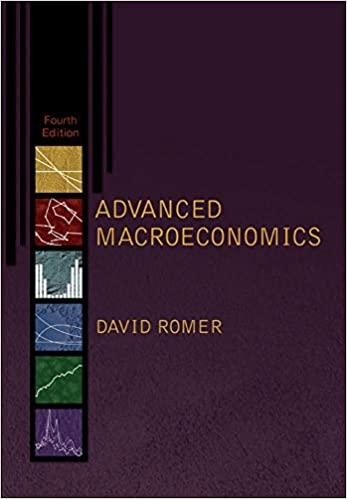8.6. A framework for investigating excess smoothness. Suppose that Ct equals [r/(1 + r)]{At + s...
Question:
8.6. A framework for investigating excess smoothness. Suppose that Ct equals
[r/(1 + r)]{At + ∞
s =0 Et [Yt +s]/(1 + r)
s}, and that At +1 = (1 + r )(At + Yt − Ct).
(a) Show that these assumptions imply that Et [Ct +1] = Ct (and thus that consumption follows a random walk) and that ∞
s=0 Et [Ct +s]/(1 + r )
s =
At + ∞
s=0 Et [Yt +s]/(1 + r )
s.
(b) Suppose that Yt = φYt −1 + ut, where u is white noise. Suppose that Yt exceeds Et −1[Yt] by 1 unit (that is, suppose ut = 1). By how much does consumption increase?
(c) For the case of φ > 0, which has a larger variance, the innovation in income, ut, or the innovation in consumption, Ct − Et −1[Ct]? Do consumers use saving and borrowing to smooth the path of consumption relative to income in this model? Explain.
Step by Step Answer:







